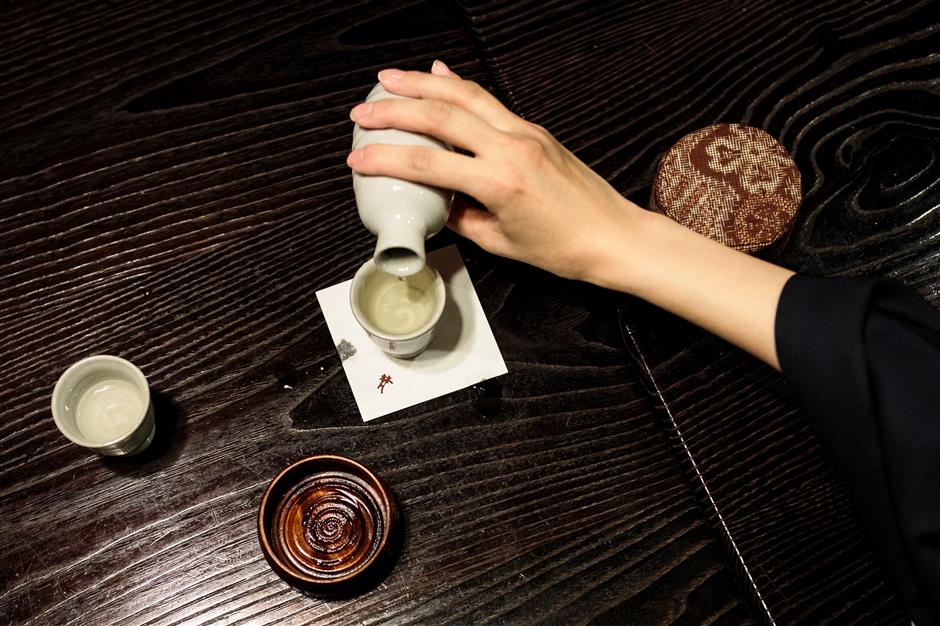Japan turns tables on France with sake nouveau

A dozen top French chefs have incorporated Japanese sake nouveau into their menus recently.
For decades France has exported millions of bottles of Beaujolais to Japan, with some even celebrating its arrival by bathing in the fruity young red wine.
Now, Japanese rice wine makers hope to turn the tide by bringing sake nouveau to France.
While wine critics are apt to turn their noses up at overly young banana-scented Beaujolais, the sake nouveau being sent to France is one of Japan’s best-kept secrets, its promoters claim.
A dozen top French chefs are so passionate about Japan’s national drink that they have incorporated sake nouveau into their menus recently, either serving it with French food or including it in some of their recipes.
“Sake nouveau is unpasteurized and only lasts for six weeks or so after it is bottled. But it has much more body, taste and nose than classic sake,” said Youlin Ly, the Parisian restauranteur behind the drive.
It is almost unknown to most Japanese drinkers, he admitted, where sake has been losing ground in recent decades to beer and wine.
“Sake is very much a local drink in Japan. People traditionally tend only to drink the sake of their region or village,” said Ly, who owns the Maison du Sake in the French capital.
“There are local events in little villages for the sake nouveau but nothing national.
“Sake is always made in winter because you need steady low temperatures to control the fermentation and the first sake tends to mature in January and February.”
Michelin-starred chef William Ledeuil, who is famed for his fusion cuisine, is using sake nouveau in a dish of lacquered beef and foie gras, adding it to a broth infused with cedrat, yuzu and lemongrass.
“I also use it like peasants did long ago with wine by adding a bit to the bottom of a saucepan of soup,” said the owner of the KGB and Kitchen Ter(re) restaurants in Paris.
Two-starred chef Alexandre Gauthier was so taken with sake nouveau that it is the only non-French beverage allowed onto the wine list of his acclaimed La Grenouillere restaurant near Le Touquet in northern France.
And it has also been included on the menu of the Mirazur at Menton on the French Riviera, which came fourth in the British-based list of the World’s 50 Best Restaurants.
Unlike some classic sakes, which are served warm, modern styles of sake and sake nouveau are served cold in wine glasses, Ly explained.
“Most Japanese people, unfortunately, have no great knowledge of sake, and fewer still know about sake nouveau. But there is real rise in interest now with new generation of producers making sake in a very different way, he said.
“Classically, the taste of sake was not meant to get in the way of the food.
“In general it wouldn’t have much nose, or any real aroma at all. Nor was it very long in the mouth.”
But that was changing.
“Nouveau sakes and modern sakes are much more aromatic and are very much made to be drunk like a wine,” Ly added.
For now only one brand of sake nouveau, Dassai, made in the small town of Iwakuni near Hiroshima, is being brought to France. But next year Ly said he hoped to have at least 10 others.
“For the last five years we have seen a real surge of interest in sake in France,” he said.
“The volume being sold is still very small (around 50,000 bottles a year), but it is going up all the time,” with the country’s leading wine retailer now stocking sake.















